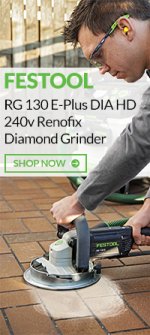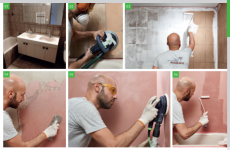I just saw this photo for the Festool Renofix RG130.
It seems to show the tool being used to clean a block paving driveway/path. Surely this isn't a correct use for such an aggressive tool? Surely a pressure washer, brick acid, oxi-bleach, etc is a far more appropriate way of cleaning bricks pictured in the photo?
Am I wrong or has someone at Festool marketing not really understood what this machine is for?
It seems to show the tool being used to clean a block paving driveway/path. Surely this isn't a correct use for such an aggressive tool? Surely a pressure washer, brick acid, oxi-bleach, etc is a far more appropriate way of cleaning bricks pictured in the photo?
Am I wrong or has someone at Festool marketing not really understood what this machine is for?


